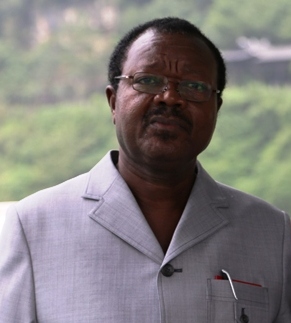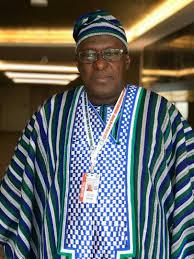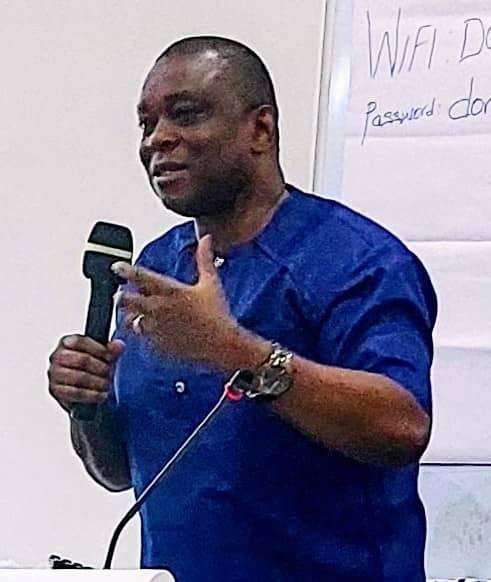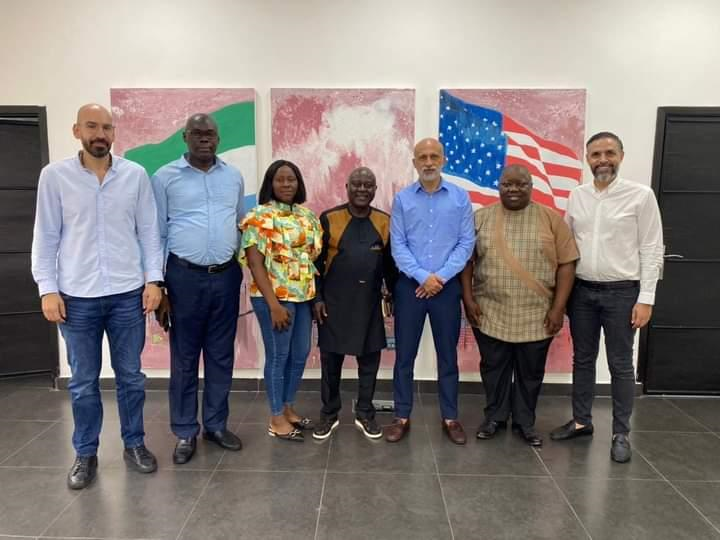Sub Regional Development within the Framework of an Economic Free Zone
The need for viable economic development within ECOWAS cannot be overemphasized. Scholars believe that after years of civil wars, economic challenges and impacts of structural adjustment, many West African countries are in search of development strategies. West African nations have therefore, been looking primarily to the role regional integration and cooperation could play in revitalizing and redirecting the development process. (Source: ‘Regional Integration and Cooperation in West Africa, A Multidimensional Perspective’ (page 30)) (Photo: Hon. Victor Foh)
Africa has great potentials of stepping into fast and sustainable growth path. For instance, within the framework of Mano River Union, with particular attention to Guinea, Liberia and Sierra Leone, there is a great potential in speeding up economic development given their rich endowment of natural resources, gas and petroleum reserves.
With their resource rich nature, the most advantageous development strategy for these three countries will be, undertaking large scale infrastructure construction especially in the area of transport as in railways and ports. Such a development strategy to be utilized by the countries under review will largely help ensure positive and far reaching impacts on not just their economies, but that of the entire West African region.
Three of the four MRU Embassies in the People’s Republic of China (Guinea, Liberia and Sierra Leone) have been working on the realization of a Sub Regional Development Project, towards an economic free zone, known as the Makona River Free Zone Development Project. This is in line with the thriving historical cross-border transnational market trading between the communities of Guekedou in Guinea, Koindu in Sierra Leone and Foya in Liberia.
A free zone is a perimeter of varying size, in which authorised businesses are exempt from the normal regime applicable in the host country, in particular, with respect to the customs and taxation fields (Bost, 2010). In return, governments expect these businesses to boost national exports, to create jobs, and to help diversify the economy by bringing in new branches of activities. (Source: West African Challenges, Are Economic Free Zones Good for Development? published by the Sahel and West Africa Club Secretariat (SWAC/OECD), 2011)
The scale and magnitude of financial resources and industrial capacity needed for producing the expected result and outcomes makes China as the most appropriate partner for implementation of a Free Zone Project in the Makona River.
Sino-Africa relations have in the last decade, given a vibrant new roadmap for cooperation and collaboration between China and African nations. FOCAC has been the core factor in fostering relations between the two. For instance, the Forum On China-Africa Relations (FOCAC) Beijing Action Plan (2013-2015) speaks of China’s will to continue in supporting the development of overseas business cooperation zones established in Africa.
China has got the much needed resources and its huge industrial capacity propels its huge global demand for West Africa’s natural and mineral resources. It today and over the last decade has a strong desire and willingness to promote Sino-Africa relations, given a vibrant new trajectory for cooperation and collaboration between China and African nations.
The Makona River Free Zone (MRFZ) is designed to work on an area across Sierra Leone, Liberia and Guinea in West Africa, and through construction of harbor, railway and energy related infrastructure works, promote the utilization and development of natural resources including mining, forest-agriculture fishing, amongst others. b Through MRFZ cooperation, the three countries will work together to promote the local production, West Africa economic integration, cross boundary investment, and achieve the regional social and economic prosperity

China’s engagement with Africa has been productive. Photo-Presidents Xi (China) & Ernest Bai Koroma-(SL)
Major components of the project include; (a) Foya, Koindu and Guekedou Free Zone, including land development, industrial facilities to build rubber processing plants in Liberia, urban infrastructure facilities, social service facilities and institutions and hydro power stations and development of natural resource. The land of the Free Zone sis expected to be 750 square kilometers, equally contributed by each of three countries; (b) Sulima Sea Port/Railway, including construction of Sulima Sea Port, railway from Sulima to the Free Zone to allow the three countries develop their natural resources; and (c) construction of railway from Free Zone (Foya, Koindu and Guekedou) to Siguiri and Voinjama, development of industrial park in Siguiri area, amongst others.
A Free Zone Development Project in the Makona River will contribute greatly in addressing the challenge of turning the natural resource advantage of the three countries into a development advantage, which will achieve a multiplier effect in the mining and other related infrastructure sectors; accelerated urbanization, manufacturing and commercialization of the economies of the countries involved; improvement in infrastructure facilities which will expand the pace of development and production in the mineral resources; strengthening cooperation between the three countries ;facilitates easy and competitive relocation of Chinese industries into this trade and investment hub which will eventually provide a strategic location for marketing China’s export to Europe, Middle East and South America.
In 2012, His Excellency President Ernest Bai Koroma of Sierra Leone spoke of how “this project will give practical effect to Mano River Union cooperation” as his Government had been thinking of reactivating the long existing activities within the Makona area, like the Koindu International Trading Centre. The Embassies of Guinea, Liberia and Sierra Leone in the People’s Republic of China have been holding discussions with Blue Seafront (BSF) Group, a China based conglomerate with a strong focus on project development and financing.
BSF Group is an extension of the Parakou Group, a shipping conglomerate registered in Singapore and operating from Hong Kong with a global coverage specialized in shipping and other related businesses. It emphasis is on developing and undertaking resource and infrastructure development projects in the markets outside China, to meet the objective of Chinese companies’ “going out” (going global) and the demand by the Chinese market for sustained and continued economic growth. As a project developer and financier BSF Group’s operational modality is to identify, secure resource assets, structure resource and related infrastructure projects, provide financing through various financial arrangements in association with Chinese government and non-government industry and the private sector.
BSF Group benefits from its experience of global business operations, expertise of a professional team consisting of private entrepreneurs, development and private bankers and financiers, and wide connection with Chinese international investment, relevant industries and infrastructure sectors and large financial institutions. Its location and good connections in Hong Kong and the mainland China enables it to easily access funding in Hong Kong and mainland China. (Source: BSF Group-China)
The idea of working on the Makona Free Zone Project is very timely, given, as stated earlier, China’s desire to support Sub Regional Development Projects in line with the FOCAC Beijing Action Plan 2013-2015. It is worthy to note, that dozens of projects have been forwarded to China’s Export-Import Bank (EXIM-BANK) by several Sub Regional Groups for funding. Therefore, the need to speedily work towards the realization of this project must be emphasized so as to achieve maximum socio-economic development in the Makona River area which in turn develops industrial, urban infrastructure, commodities trade, commerce, services, and real properties within the Free Zone area.
Stay with Sierra Express Media, for your trusted place in news!
© 2014, https:. All rights reserved.







Herbert M'cleod
/
All of this is true and more. What progress have we made since the signature in 2012 ?
7th March 2014